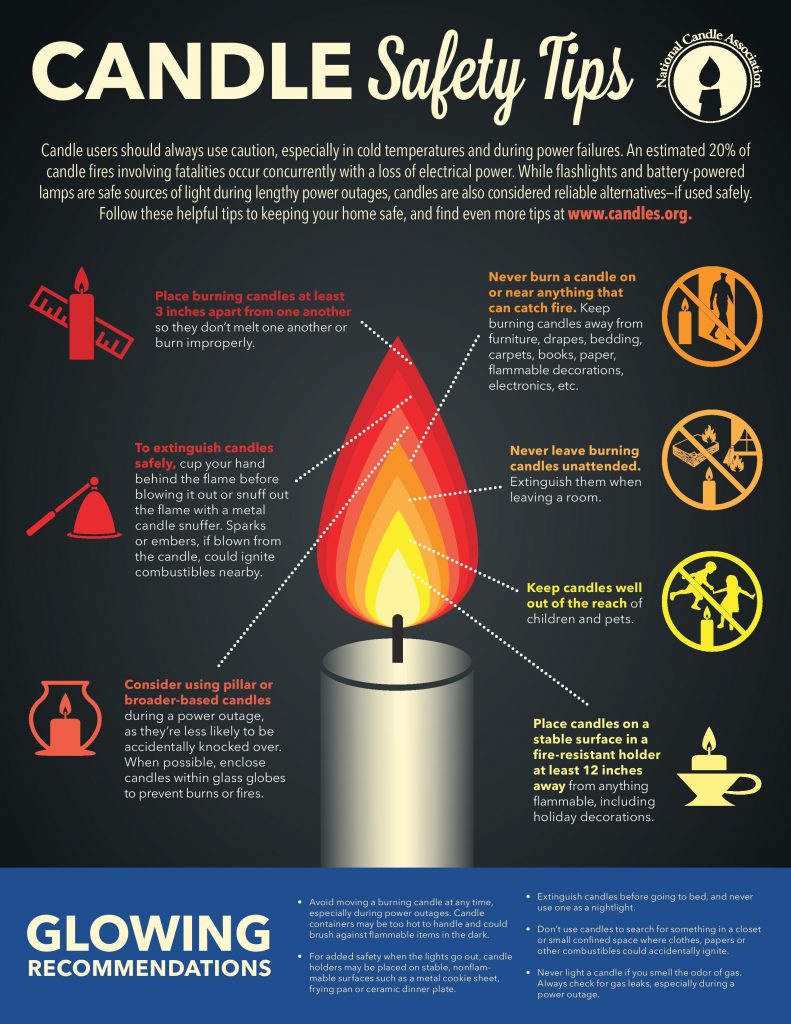
Candles have been a source of light and ambiance for centuries, adding warmth and charm to our homes. However, their flickering flames also pose a potential fire hazard if not handled responsibly. Understanding the flammability of candle wax and implementing proper safety measures is crucial to prevent accidents and keep your home safe. This article will delve into the science behind candle wax flammability, provide practical tips for preventing fires, and guide you on safely extinguishing candles to minimize risks.
Candle Wax Flammability
Is candle wax flammable? Absolutely. Most common candle waxes, such as paraffin, soy, beeswax, and palm wax, are highly flammable substances. When heated, these waxes melt and vaporize, creating a combustible mixture that can ignite easily when exposed to an open flame or spark. The melting point of different waxes varies, but generally, they begin to soften and release vapors at temperatures around 100-180 degrees Fahrenheit.
The flammability of candle wax is influenced by several factors, including its chemical composition, purity, and the presence of additives. For example, paraffin wax, a petroleum byproduct, has a lower melting point and burns more readily than beeswax, which is derived from honeycombs. Additives like fragrances and dyes can also affect flammability, potentially increasing the risk of fire if not used responsibly.
Understanding the flammable nature of candle wax is the first step in ensuring safe candle use. It emphasizes the need for vigilance and adherence to safety guidelines to prevent accidental fires.
Preventing Candle Fires
Preventing candle fires requires a proactive approach that involves careful planning and consistent attention to detail. One crucial aspect is choosing candles wisely. Opt for candles made from high-quality waxes, such as soy or beeswax, which tend to burn cleaner and slower than paraffin wax. Avoid candles with excessive fragrance loads, as these can increase the risk of soot buildup and fire hazards.
Another essential preventive measure is selecting appropriate candle holders. Ensure that the holder is sturdy, heat-resistant, and wide enough to prevent the candle from tipping over. Avoid using decorative holders made of flammable materials like paper or fabric. Always place candles on a stable, heat-resistant surface away from drafts, vents, and curtains.
Extinguishing Candles Safely
Extinguishing candles safely is paramount to preventing fires. Never leave burning candles unattended, and always extinguish them before leaving the room or going to sleep. Avoid blowing out candles directly, as this can scatter hot wax and embers. Instead, use a candle snuffer to gently extinguish the flame by smothering it. If a snuffer isn’t available, carefully dip a long matchstick or lighter into the melted wax to absorb the flame.
After extinguishing a candle, allow it to cool completely before handling or moving it. Never pour water on a burning or recently extinguished candle, as this can cause the container to crack and potentially start a fire.
Keeping Candles Away from Flammables
Maintaining a safe distance between candles and flammable materials is crucial for fire prevention. Keep candles at least 12 inches away from any curtains, drapes, furniture, paper products, or other combustible items. Avoid placing candles near open windows or vents, as drafts can cause the flame to flicker erratically and increase the risk of ignition.
When burning multiple candles, ensure they are spaced adequately apart to prevent them from coming into contact with each other. Never cluster candles together in a confined space, as this can create an excessive heat buildup and increase the likelihood of fire.
Candle Safety Tips
- Always burn candles on a stable, heat-resistant surface.
- Keep candles away from drafts, vents, and flammable materials.
- Never leave burning candles unattended.
- Extinguish candles before leaving the room or going to sleep.
- Use a candle snuffer to safely extinguish flames.
- Trim wicks to 1/4 inch before each burn.
- Choose high-quality candles made from safe waxes.
- Avoid using candles in enclosed spaces with poor ventilation.
- Supervise children and pets around burning candles.
Conclusion
Candle safety is paramount to preventing fires and ensuring a secure home environment. By understanding the flammability of candle wax, implementing preventive measures, and adhering to safe extinguishing practices, you can enjoy the ambiance and warmth of candles while minimizing risks. Remember, vigilance and responsible use are key to keeping your home safe from fire hazards associated with candles.
